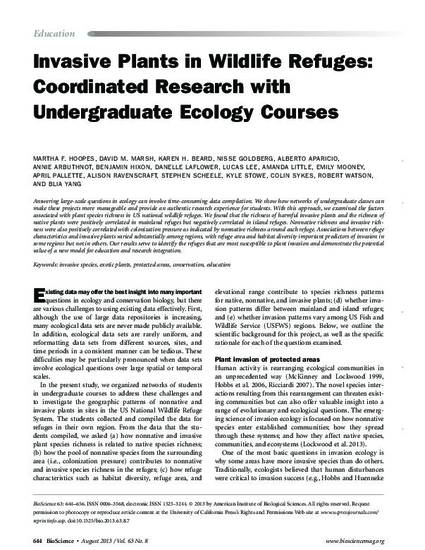
Article
Invasive Plants in Wildlife Refuges: Coordinated Research with Undergraduate Ecology Courses
Bioscience
(2013)
Abstract
Answering large-scale questions in ecology can involve time-consuming data compilation. We show how networks of undergraduate classes can make these projects more manageable and provide an authentic research experience for students. With this approach, we examined the factors associated with plant species richness in US national wildlife refuges. We found that the richness of harmful invasive plants and the richness of native plants were positively correlated in mainland refuges but negatively correlated in island refuges. Nonnative richness and invasive richness were also positively correlated with colonization pressure as indicated by nonnative richness around each refuge. Associations between refuge characteristics and invasive plants varied substantially among regions, with refuge area and habitat diversity important predictors of invasion in some regions but not in others. Our results serve to identify the refuges that are most susceptible to plant invasion and demonstrate the potential value of a new model for education and research integration.
Keywords
- invasive species,
- exotic plants,
- protected areas,
- conservation,
- education
Disciplines
Publication Date
2013
DOI
https://doi.org/10.1525/bio.2013.63.8.7
Citation Information
Karen H. Beard. "Invasive Plants in Wildlife Refuges: Coordinated Research with Undergraduate Ecology Courses" Bioscience Vol. 63 Iss. 8 (2013) p. 644 - 656 Available at: http://works.bepress.com/karenh_beard/117/
